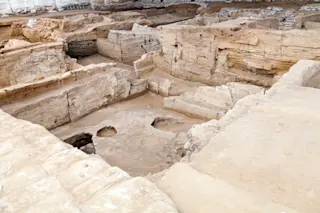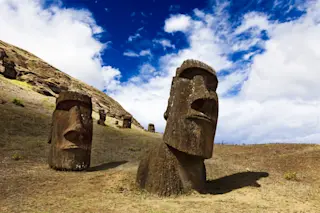The most significant discovery in Oscar Todkopf’s career was entirely serendipitous. Last April, the Hindenburg University paleontologist was hiking in Germany’s Neander Valley when he tripped over something on a trail. Some quick digging exposed the obstacle as the tip of a mastodon tusk. But it wasn’t until a few weeks later when the entire tusk was unearthed and dated that Todkopf realized the magnitude of his find. The tusk, he believes, was a Neanderthal musical instrument. Todkopf calls it a "Neanderthal tuba." Like the bone flute discovered in Slovenia last year, the 50,000-year-old tuba predates the presence of anatomically modern humans in Europe.
Sixteen carefully aligned holes dot the surface of the six-foot-long tusk. "I think a Neanderthal master craftsman must have used a stone awl to hollow out the tusk and to punch the holes," says Todkopf. The number of holes, he says, suggests that Neanderthals used an ...














